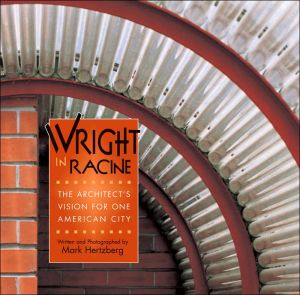

 |

|

The average rating for Wright in Racine: The Architect's Vision for One American City based on 2 reviews is 3.5 stars.
Review # 1 was written on 2014-05-01 00:00:00 Ma De Ma DeSuperb book about architect Hart Wood and his work in Hawaii curing the 1920s, 30s, 40s and 50s. The authors are architects themselves but wrote for the general reader such as myself. |
Review # 2 was written on 2010-01-17 00:00:00 Terrie Phillips Terrie PhillipsPevsner's book on European architecture may be a celebrated academic work on the subject, fit for those with an above average knowledge on the subject, but a book for the popularization of architecture history it certainly is not. After a few pages one gets used to the relatively pompous and difficult style of narration. With the haphazard organisation of chapters (Britain and France are given one chapter that covers the period between the 16th century to the 18th), the rather more than frequent insistent name-dropping of architects and pieces of architecture I, personally, could not get used to. The reader should become very comfortable with paragraphs such as "Of blocks of flats those by Mies van der Rohe at Berlin (1925) and Stuttgart (Weissenhof, see below; 1927) deserve mention, of large estates of flats those by Bruno Taut (1880-1938) in Berlin and Ernst May (born 1862) in Frankfurt, both begun about 1926, the one public utility, the other municipal housing. A summing up of the best so far achieved was the experimental estate of the Deutscher Werkbund at the Weissenhof near Stuttgart (1927) in which architects from Gropius and Mies van der Rohe to Oud and Le Corbusier co-operated" if the reader wishes to finish this book with their faculties intact. The parade of mentioned architects seems never-ending, Pevsner being more than comfortable bombarding the supposedly learned reader and speaking to him as his equal. The same is done with the cascade of works of architecture mentioned, many of which have no illustration attached, and the painful verbal description of complex physical spaces demands the reader have a vivid imagination. Pevsner, a native German, later in his life became enamored with England (citizenship received in 1946) and this infatuation can be sensed in some parts of his work in the form of bias, as attention is very often redirected in this book on European architecture towards English architecture. Little is said of continental Art Nouveau, but the British "Arts and Crafts" movement is discussed thoroughly. The author's preference for modern, cubist, Le Corbusier-like architecture can also be sensed while trudging through paragraphs such as the one copied above. The organic, fluctuant, and blooming architecture of the Art Nouveau that moved European attention from the dusty, old, conservative Historicism movement is safely kept in the shadows by Pevsner, who, in 1933 was on the side of Goebbles and his lot in their tirade against degenerate art. "Pevsner was 'more German than the Germans' to the extent that he supported Goebbels in his drive for 'pure' non-decadent German art" |
CAN'T FIND WHAT YOU'RE LOOKING FOR? CLICK HERE!!!